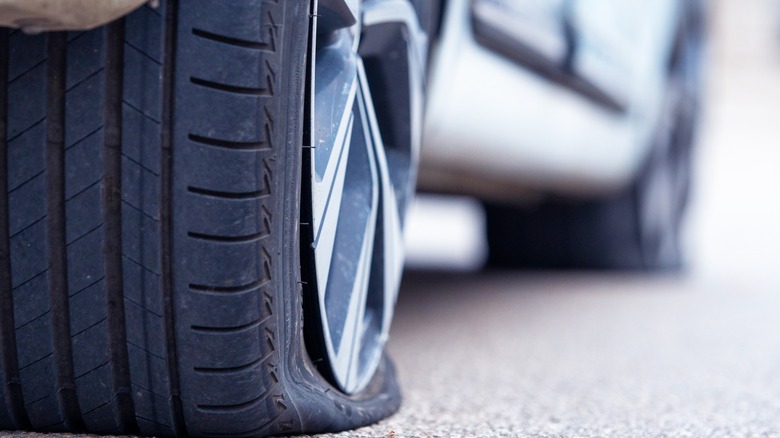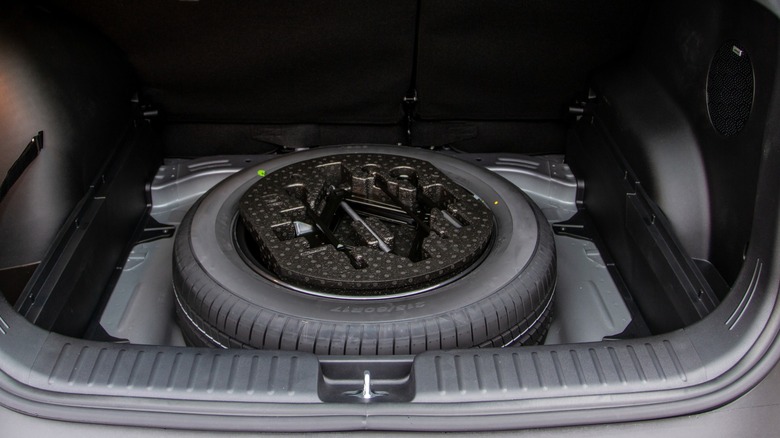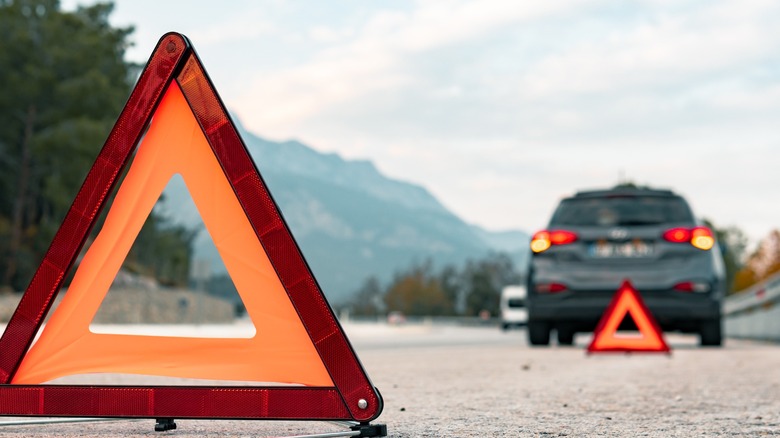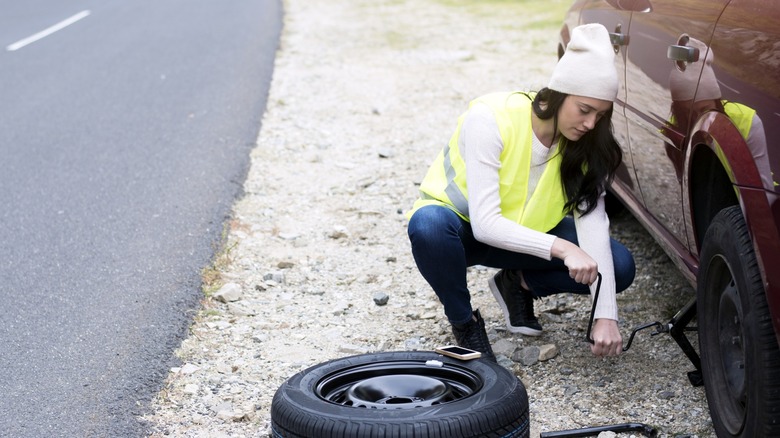10 Items To Keep In Your Car In Case You Get A Flat Tire
No matter what you do, you can never completely avoid a flat tire. It's just one of those things that comes with driving. However, you can make sure you're well-prepared to handle it when it occurs. Otherwise, you could be stranded or helpless, miles away from home or an auto repair shop.
According to an AAA Club Alliance report, nearly a third of all car troubles on the road are related to tires. In fact, every second, about seven tires get punctured somewhere in the United States, adding up to roughly 220 million flat tires every year.
While nobody likes finding themselves in an emergency, you'll likely experience about five flat tires in your lifetime. Yet nearly 40 million Americans don't have a clue what to do when they get a flat. The first step towards feeling prepared for this emergency is packing the right tools. But what do you need to pack in case you get a flat tire beyond a spare tire, jack, and wrenches? Let's get into the details of everything you might need.
The main tools you'll need for a quick swap
When driving, pay attention to crucial warning signs that your tires need to be replaced because a quick trip to a professional can save you the stress of suddenly having to swap it out for your spare.
To swap out the bad tire, you'll need a functional spare tire. So, before driving out, occasionally check that the spare is properly inflated. You'll also need a jack to lift your car off the ground and a tire iron or lug wrench to remove the tire.
Another essential tool is a portable air compressor to pump up the spare tire if it requires air. A cigarette lighter car adapter will be useful for powering the compressor, while a tire pressure gauge will help you ensure the car's tire pressure is right before you hit the road again. But remember, you can only drive on your spare for so long.
Tools you need to ensure safety
If you have a flat tire, whether during the day or at night, on a busy or lone road, it is essential that other drivers know you're there to keep both you and them safe. To alert other road users, you'll need safety markers like battery-operated flashers and reflective triangles.
Ideally, you should have about three of each and spread them out in a straight line behind your car at intervals of about 10 feet, 100 feet, and 200 feet. You might not have a measuring tape to give you precise measurements, so you can measure them in steps instead. The first one should be about 8 steps, the second about 80 steps, and the third roughly 160 steps behind your car. For the battery-operated flashers, you might need a pack of extra batteries.
Wheel blocks are also useful when you're trying to replace a flat. They help stop your car from rolling. It might seem like such a small item, but it makes all the difference in ensuring your safety while you work. Another must-have for any car emergency kit is a flashlight. If it's magnetic, you can stick it to your car for hands-free use, which means both hands are free to work on the tire.
Some extra tools for comfort and convenience
Changing a tire means getting down on the ground, whether rocky, muddy, gravelly, or sandy, which isn't always clean or comfortable. A rubber mat or a thick rug can make it easier on your knees and make the experience more bearable. Speaking of bearable, getting caught in the rain is no fun, especially when you're trying to fix a flat. A rain poncho keeps you dry so you can focus on the task at hand. You can also keep a towel or blanket in the car to dry off and keep warm.
Now, we hope that if you ever experience a flat, you can resolve the problem and get back on the road. But if you're really stuck, a tow strap can be a lifesaver. It allows another vehicle to pull your car to a better location or a repair shop. No matter the emergency, your phone keeps you connected. While you try to deal with a flat tire, keeping a power bank and charger in your car means you won't have to also worry about your phone dying right when you need it most.
Finally, many people find themselves learning to change a tire only when an emergency occurs on the road, and that could be very nerve-wracking. It's best to practice in your home garage with the owner's manual that comes with the car or watch a couple of videos on YouTube so you're actually prepared to handle the situation when it occurs.



